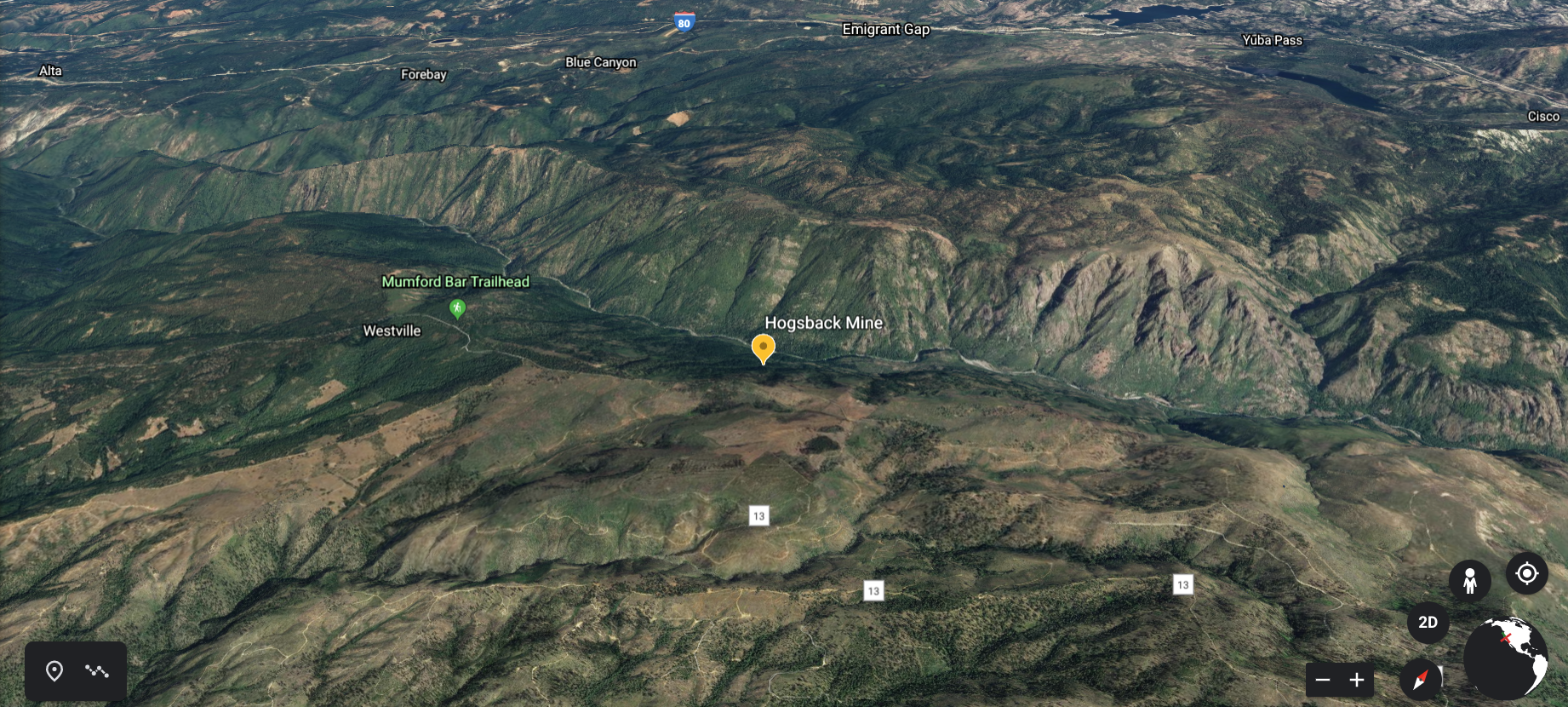The tour uses a red line to indicate the route you can drive. A green line indicates the old roadbed, often not passable in an automobile. The old road route gives us an idea of how much the path has changed. Being able to see the old rout path also helps in finding some of the historical features we will be discussing as we travel along.
We will post on each feature moving up from the county line. When you see the orange Adventures in California History icons, click one to have more info on that site come up. Sometimes nothing is remaining; other times, foundations or ruins are visible. As we travel the road path will be continued so that eventually a complete history tour map will be available for you to use. Place the map link on your computer or cell device with a shortcut, and you'll always be able to access it when you want to know more about something you see.
We had talked in the past weeks about two roadhouses along Green Valley Road, the Kentucky House, and the Rolling Hills Hotel. You will see both marked with the orange icon, which, when clicked, brings up more info, along with a link to even more info. Eventually, we will add videos to the mix.
There are two additional icons we added, showing the site of the old Mormon Island school, and the El Dorado County re-location cemetery, which houses the graves relocated due to construction of the Folsom Dam and reservoir. All the little towns that once occupied the river banks before the dam had cemeteries. Remains from Mormon Island, Salmon Falls, Condemned Bar, Carrollton Bar, McDowell's Hill, Natural Dam, and Doton's Bar cemeteries were relocated to the new Mormon Island Cemetery. The re-location also included five individual graves.
Using the map, after visiting the cemetery, we head back out on Green Valley Road and past the sites of the two roadhouses we discussed earlier, the Kentuck House and Rollin Hills Hotel. The locations shown are estimates based on historical maps and written information. If anyone had a more exact location for any item of historical interest, let us know so we can more the icon to better shows that new information.
This part of our tour will follow the old route, which means we will be turning left on Salmon Falls Road, and right on Malcolm-Dixon Road, which was the former Green Valley Road. Bet you didn't know that! We will continue to our next destination along that road next week.

































